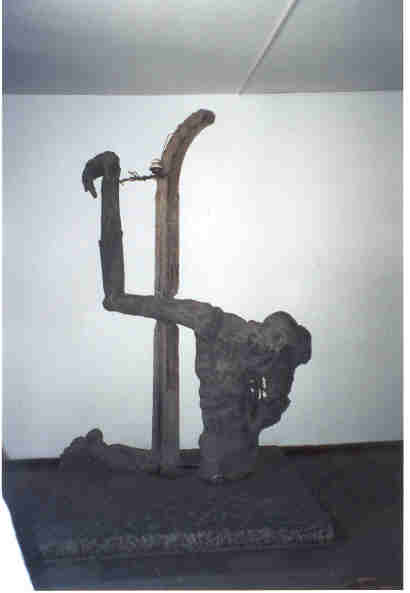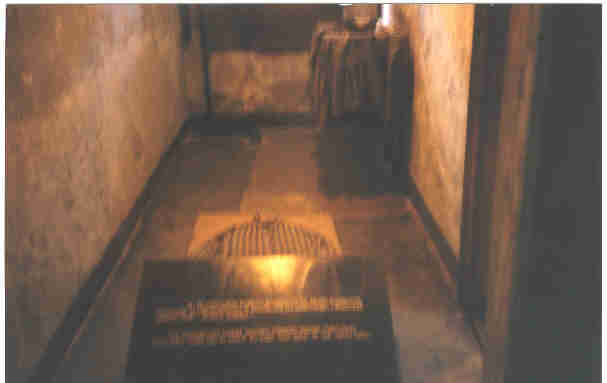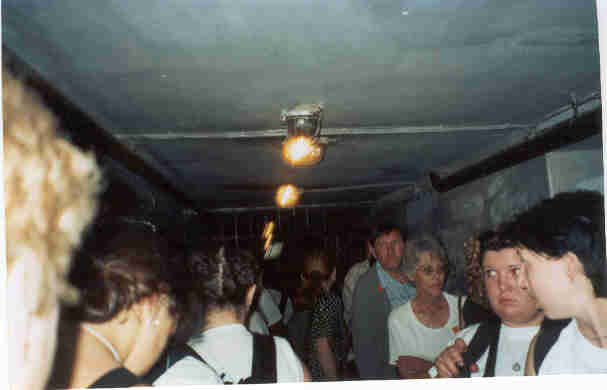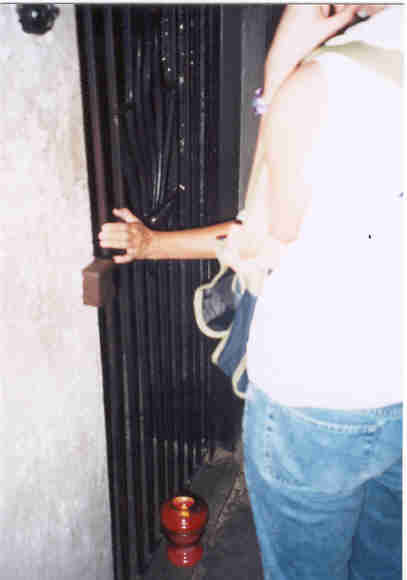|
|
|
 |
Auschwitz Museum |  |
|
Inside the Buildings Most of the buildings in Auschwitz-I have been transformed into museums for visitors to walk through. Pictures, maps and artifacts are on display throughout, and anyone who doesn't know much about The Holocaust would learn a lot from this tour. I understand the need to transform the actual place into a museum to educate those interested in visiting the camp without any previous knowledge, but the changes have really taken away from the "feel" of the camp. Maybe it is just my personal opinion, but I did not "get out" of this camp what was intended. For example, a picture on this page shows a display in Auschwitz-I where hair from murdered victims has been kept in a case built after the war to show visitors. Many on our tour were bothered by seeing this hair, but to me it still contained a museum-style benign quality. On the other hand, when we were in Majdanek and stood in the ACTUAL room where people had their heads sheared, I felt more connected to the victims. Later visits to Auschwitz-Birkenau and Majdanek "meant" more to me on our trip than this first stop. |
|
 |
Museum's Sculpture The last thing that a visitor to the Auschwitz museum passes before entering the main courtyard is this piece of art. Some people have a hard time seeing the actual full picture. It is the torso and arm of a man tied to a wooden stake. The image created is that of the swastika. Enlarge Picture |
 |
Beds
Some of the buildings inside Auschwitz-I still contain the beds used for housing the prisoners. Better interior photos of concentration camp housing can be seen in my section on the Auschwitz-Birkenau Barracks.Enlarge Picture |
|
|
|
 |
Inside a Cell Interior of a cell that could be home to many people at one time.Enlarge Picture |
 |
Block 11 Our group in the basement of Block 11, which acted as a prison within the camp. Prisoners who were sentenced to any punishment other than immediate death were sent here to face cells that provided torturous conditions, such as starvation and/or total darkness. Enlarge Picture |
 |
Starvation Cell Although most of the victims murdered at Auschwitz-I were shot to death, some received crueler punishments. This cell was assigned to those people who received the punishment of death by starvation. The candle is in memory of a man (I hope to eventually have his name on here) who asked to take the punishment of a younger person who had been sentenced to death. The younger man's life was spared and the old man died in this cell. In honor of him, a candle remains burning at the site. UPDATE: Konrad Kasior sent an email to me saying that the man who is honored in this picture is Saint Maximilian Kolbe. In honor of the fact that he gave his life to save another man, Kolbe was honored with sainthood from the Pope. Thanks for the information, Konrad. Enlarge Picture |
|
|
|